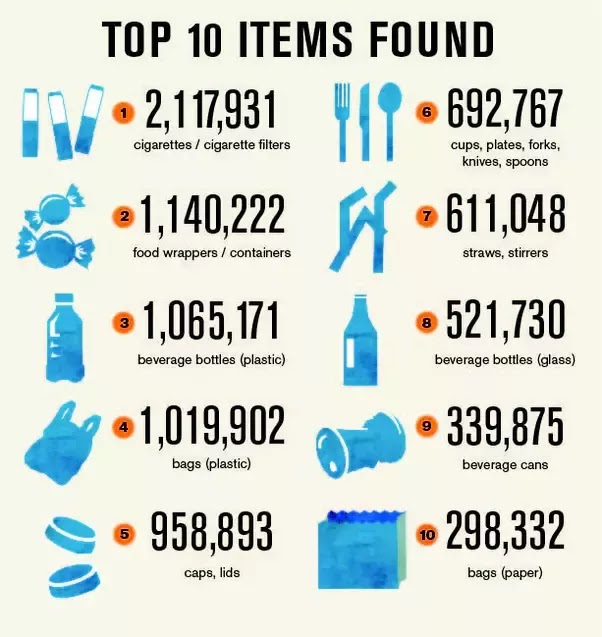An ongoing environmental disaster that has captured the recent attention of citizens and artists is the plastic pollution floating in the ocean.
After seeing sights like this....
And reading facts like this...
Artists have taken this as an opportunity to use their creative power to educate and express important issues to in their work.
Many artists are creating art made entirely of marine debris collected from beaches. The sculptures illustrate the tragedy of plastic pollution in our waterways.
Angela Haseltine Pozzi is the artistic and executive director behind Washed Ashore, “a non-profit, community-based organization with a mission of educating and creating awareness about marine debris and plastic pollution through art.”
Angela was inspired by the marine debris she saw accumulating on the beaches of her native Oregon.
Through Washed Ashore, she organizes volunteers to clean up beaches and use the debris to construct larger-than-life sculptures of the animals most affected plastic pollution. “Until we run out of plastic on the beach,” she says, “we will keep doing our work.”
These plastic art works can withstand the outdoor elements and while this is a great quality for art materials that will be outdoors, this is exactly why plastic is so bad for our oceans and marine life.
Other artists share the same concern about the pollution in our oceans.
Mandy Barker is an international award-winning photographer whose work involving marine plastic debris has received global recognition.
Working with scientists she aims to raise awareness about plastic pollution in the world's oceans while highlighting the harmful affect on marine life and ultimately humans.
British Artist Stuart Haygarth walked a 500 mile journey along the southern coast of England with the goal to pick up every single man-made object that he could find along the way. His art is made by and arranging debris into collections that show us how weird the odd objects in our lives can be.
Tide Chandelier
Will reusing found materials be the best way to express your idea?
What is something you are concerned about or care about that you can express in your art?
Can art help to solve a problem?
http://www.bbc.com/culture/story/20160324-stuart-haygarths-strand-the-strange-beauty-of-lost-rubbish
http://time.com/4358434/world-oceans-day-art-marine-plastic/




















Beautiful lesson Beth!
ReplyDelete